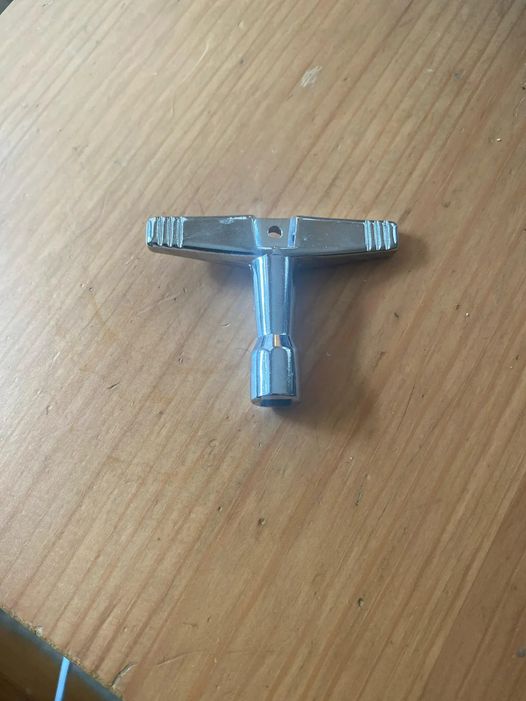A metal having a square opening in the bottom
Uncategorized cavin anderson · June 4, 2024 · 0 Comment

Exploring the Drum Key: An Essential Tool for Drummers
Origins in Antiquity:
Drumming’s cultural and ceremonial significance in ancient civilizations like Egypt and Mesopotamia saw early drummers employing rudimentary tools to tune drumheads, laying the groundwork for the drum key’s evolution.
Evolutionary Progress:
Advancements in metallurgy and machining during the 19th century led to the development of the modern drum key—a compact, T-shaped tool with a hexagonal socket. This design revolutionized drum tuning, allowing for quick adjustments to achieve optimal sound quality.
Functional Versatility:
The drum key’s primary function involves tuning drumheads by adjusting tension rods. Drummers insert the key into the hexagonal socket, rotating it clockwise or counterclockwise to alter pitch and tone. Additionally, it facilitates the removal and replacement of drumheads, granting precise control over sound.
Impact on Music:
Throughout history, the drum key has been instrumental in shaping the sounds of various musical genres. From marching bands’ thunderous cadences to the intricate rhythms of jazz and rock, drummers rely on its precision. Studio engineers also utilize drum keys to fine-tune recordings, enhancing sonic clarity.
Continued Significance:
As a symbol of craftsmanship and precision, the drum key remains indispensable for percussionists. Its humble design masks its profound influence on music, underscoring its enduring importance in shaping diverse musical traditions.
Conclusion:
The drum key’s journey from antiquity to modernity reflects its indispensable role in the world of percussion. Whether wielded by seasoned professionals or aspiring drummers, it remains an essential tool for unlocking the rhythmic potential of the drums.